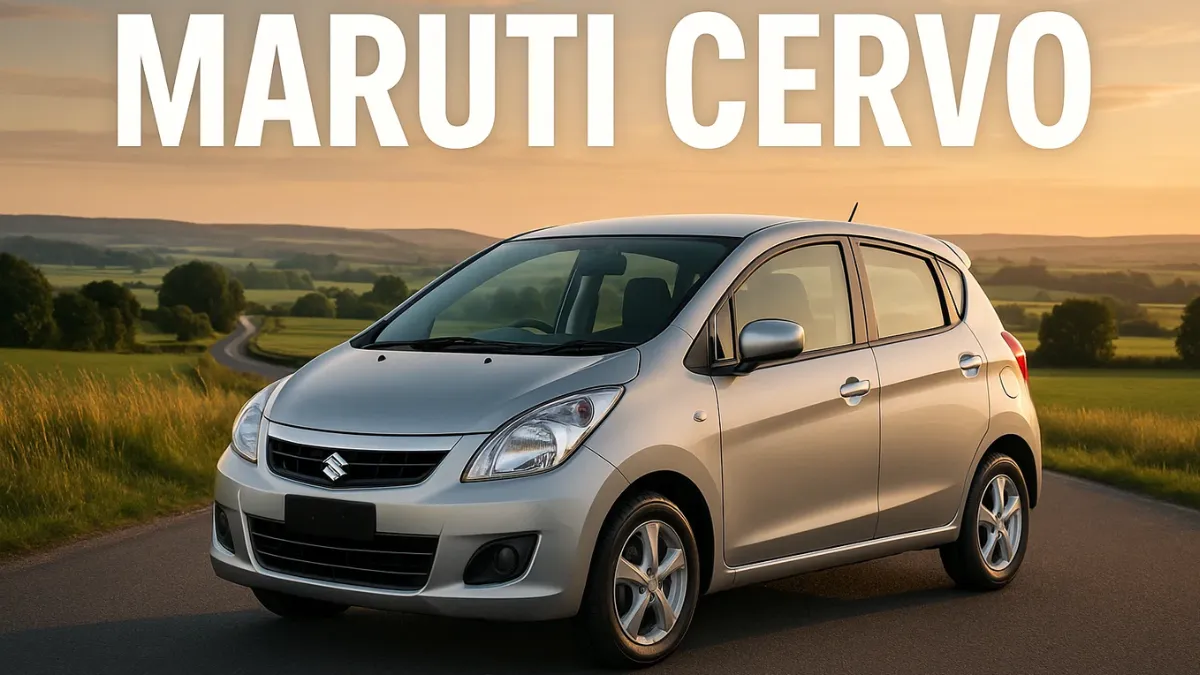The Indian automobile market has always been dominated by compact cars, thanks to their affordability, fuel efficiency, and practicality for city driving. For decades, Maruti Suzuki has been at the forefront of this segment, delivering iconic models like the Maruti 800, Alto, and WagonR. Among its many ambitious projects, one car that generated significant buzz was the Maruti Cervo.
Rumored to be the true successor to the legendary Maruti 800, the Cervo was envisioned as a stylish, fuel-efficient, and budget-friendly hatchback. Although it never made it to Indian roads, its concept left a lasting impression. In this detailed article, we’ll explore the Maruti Cervo’s history, design, specifications, features, and why it still remains a talking point among enthusiasts.
History of the Maruti Cervo
The Origins
The Cervo was originally a Suzuki model launched in Japan during the 1970s as a compact, sporty hatchback. Over the years, it evolved into a modern kei car for the Japanese market.
Indian Market Buzz
In the late 2000s, Maruti Suzuki reportedly considered launching the Cervo in India to replace the aging Maruti 800. With rising competition from Hyundai, Tata, and others in the entry-level car market, the Cervo was positioned as a stylish yet affordable car that could win over first-time buyers.
Design and Styling
Exterior Design
The Cervo stood out with its futuristic yet compact design, unlike the boxy shapes of traditional budget cars. Key highlights:
- Sleek aerodynamic profile
- Sporty headlights and grille
- Smooth lines for a modern look
- Compact dimensions ideal for Indian roads
Interior Design
Inside, the Cervo promised a premium feel for an entry-level car:
- Dual-tone dashboard
- Digital instrument cluster
- Ergonomic seating for five passengers
- Improved cabin space compared to the Alto
Engine and Performance
Expected Engine Options
The Maruti Cervo was rumored to come with:
- 0.7L petrol engine (Suzuki’s Japanese kei car standard)
- Possible 1.0L K-Series petrol engine for India
Performance Highlights
- Fuel efficiency expected at 20–25 km/l
- Lightweight design for improved handling
- Manual and AMT transmission options (rumored)
Features and Technology
For its time, the Cervo was rumored to include features that were rare in budget cars:
- Power steering
- Air conditioning with climate control
- Front power windows
- Central locking system
- Audio system with AUX/USB
- Airbags and ABS (in top variants)
This made it a unique offering in the entry-level segment, targeting young buyers and small families.
Safety Aspects
Maruti Suzuki planned to make the Cervo safer than the Maruti 800, with:
- Dual airbags
- Anti-lock Braking System (ABS)
- Side-impact beams
- Stronger chassis for crash protection
This was a big deal, as budget cars of that era rarely emphasized safety.
Fuel Efficiency
One of the strongest selling points would have been the mileage. With Maruti’s reputation for fuel-efficient cars, the Cervo was expected to deliver 20–25 km/l, making it highly economical for daily commuting.
Target Market and Pricing
Who Was It For?
- First-time car buyers
- Students and young professionals
- Small families looking for an affordable second car
- Urban commuters needing a compact hatchback
Expected Price
Industry speculation placed the Cervo’s price between ₹2.5 lakh and ₹3.5 lakh, making it a direct competitor to the Tata Nano, Hyundai Eon, and base Alto variants.
Competition
Had it launched in India, the Maruti Cervo would have competed with:
- Tata Nano (budget-friendly city car)
- Hyundai Eon (stylish entry hatchback)
- Maruti Alto 800 (Maruti’s own best-seller)
- Chevrolet Spark (small hatch alternative)
With its design and features, the Cervo could have carved out a niche for itself.
Why the Maruti Cervo Never Launched in India
Despite the hype, the Cervo never hit Indian showrooms. Possible reasons:
- The Tata Nano’s struggles in the market may have discouraged Maruti from taking risks.
- Launching at such a low price point with advanced features wasn’t financially viable.
- Maruti shifted focus to upgrading its existing models like the Alto, WagonR, and Swift.
- Indian consumers preferred slightly larger hatchbacks for family use.
Legacy and Enthusiast Appeal
Even though it never launched, the Cervo remains popular among automobile enthusiasts for what it represented:
- A bold attempt to modernize the budget car segment
- A stylish successor to the Maruti 800
- Proof that small cars can be practical yet premium
Today, it’s remembered as one of Maruti’s most talked-about “what could have been” projects.
Conclusion
The Maruti Cervo was more than just a concept—it was a vision of affordable urban mobility with a touch of modernity. While it never launched in India, it showed Maruti Suzuki’s intent to innovate in the compact car space.
If it had arrived, the Cervo could have redefined the entry-level car market, offering young buyers a stylish, safe, and fuel-efficient hatchback. Though it remains a missed opportunity, the story of the Maruti Cervo continues to fascinate car lovers in India.

